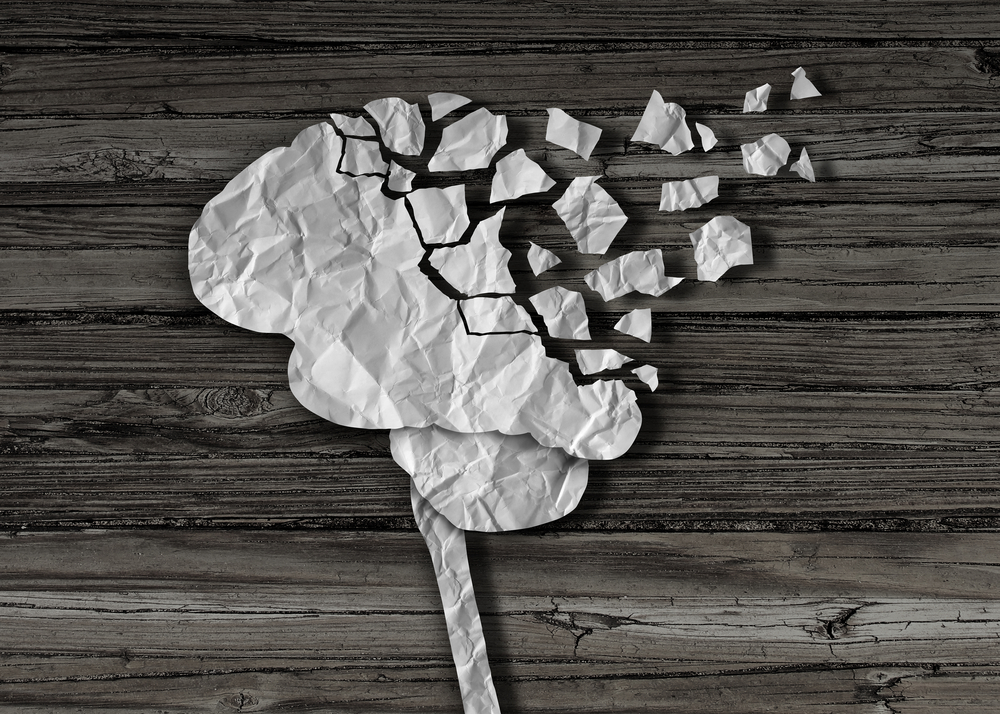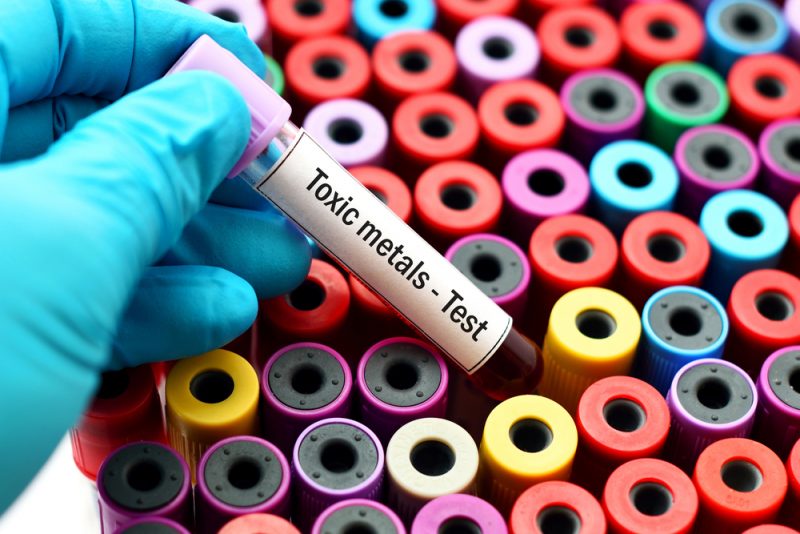Parkinson’s disease is a progressive neurological disorder that affects the motor centers of the brain. Extensive research has been done to uncover the cause of this disease that is affecting so many people worldwide.
For good reason, environmental pollution is a topic that is coming into America’s consciousness. With pesticides polluting the food, heavy metals plaguing our water and fish, and solvents hanging in the air, we are constantly bombarded with toxins that we cannot see.
How Do Toxic Substances Get Into the Body?
Toxic substances can enter our body and be processed in several different ways. They can come in through the food we eat, the water we drink, the air we breathe and even through our skin.
The liver and kidneys are our main detoxification organs. They break down compounds into smaller components so that they can exit the body easily. Some compounds become more harmful to the body when they are broken down, and some compounds cannot be broken down at all. The harmful compounds that are not able to exit the body will then circulate through it via the bloodstream, where they can take up residence in different organs and can cause damage.
Our Brain Is More Protected
Because our brain is arguably the most vital organ, it is protected by something called the blood-brain barrier (BBB). The BBB is a membrane that protects the brain and spine from potentially harmful substances that come into the body. The BBB allows certain nutrients, water, and lipid soluble compounds pass through its membrane.
Toxins Can Still Get Into the Brain
Certain toxic substances, like pesticides and some metals, can cross the blood-brain barrier and wreak havoc on our neurological system. This concept is called neurotoxicity.
“Neurotoxicity is the capacity of chemical, biologic, or physical agents to cause a damaging functional or structural change in the nervous system.”
The effect neurotoxicity has on us takes many forms including pain, cognitive issues, and motor control defects.
Neurotoxicity and Parkinson’s Disease
A study in 2010 named Metal Emissions and Urban Incident Parkinson Disease examined a Parkinson’s afflicted population of 35,000 people to determine the role of environmental toxins on the incidence and progression of their symptoms. Through examining this population, a link was found between urban areas with a greater release of copper and manganese had a higher incidence of PD.
This same study also reported that heavy metals combined with pesticides (lipid-soluble compounds that can cross the BBB) can have an effect in binding to the specific protein that is affected in Parkinson’s disease: alpha-synuclein. The buildup of this protein in addition to oxidative damage in the brain has been associated as a causative factor for PD.
Oxidative damage or oxidation is a form of cellular aging, causing molecules to become injured. This process results in the damage of dopamine-producing cells, which can affect movement in those with Parkinson’s disease.

Environmental Toxins Are Very Harmful to the Brain
In 2018, a study named An Emerging Mechanism Translating Environmental Toxicant Exposure Into Neuroinflammation in Parkinson’s Disease explained the mechanism behind why environmental toxicity is so harmful to the brain.
As previously mentioned, some pesticides are able to cross the blood-brain barrier. A pesticide called Rotenone, which is used in agriculture and in water management, has been linked to Parkinson’s disease. This pesticide causes a cascade of neuroinflammation in the brain by activating a protein called an “inflammasome.”
The role of neuroinflammation in Parkinson’s disease has been validated extensively by several studies. It is characterized by the buildup of toxic metabolites, oxidative stress, and misfolding of proteins in the brain, which are all associated with Parkinson’s disease.
Due to our industrialized life, we are constantly exposed to toxins our bodies cannot process. Our bodies have not evolved mechanisms for processing these chemicals, like the mechanisms they have developed to prevent starvation or to ward off pathogens like the flu virus.
What Is Body Burden?
Heavy metals and other substances can build up in our system and organs. For example, lead can be stored in our bones. As we age and lose bone mass, lead is released into the circulation.
Whether the substance stores or circulates in our body, it contributes to our overall body burden. Body burden is the total amount of toxicants that accumulate in an individual’s body. Whether our toxins are stored in our fatty tissue, our brain, our bones or organs, there is a lot we can do to rid our body of these substances.
What Can You Do the Reduce the Toxins in Your Body?
The first step to reducing body burden is to reduce daily exposure to toxins. Daily toxins can come in your food, water, cosmetics, and the immediate environment you live in. It is best to choose organic and grass-fed options for food, as much as possible, to ensure the food you eat hasn’t been sprayed with pesticides.
Fish
Fish has many health benefits as it is a good source of protein and healthy fats. However, there are certain fish that have a reputation for having high levels of mercury, among other toxins. It is best to consume the fish that have lower levels of contaminants.
Tips for consuming fish:
- Avoid larger fish like tuna. Large fish contain more heavy metals stored in the bodies.
- If you like tuna, find a brand that tests each fish for ensured low levels of mercury. Wild Planet is a brand that tests each fish.
- Choose smaller fish as they usually contain fewer heavy metals.
- Choose wild caught fish over farmed-raised fish.
- Wild-caught Alaskan Salmon is a great choice for low heavy metals with a high quality of nutrition.
- Use the Environmental Protection agencies’ seafood guide to pick the best fish for you.
Foods to Eat:
Garlic
Garlic has positive effects on detoxification organs and will help them to eliminate harmful toxins. Garlic can also reduce some harmful effects caused by heavy metals.

Psyllium Husk Powder and Freshly Ground Flaxseeds
Psyllium and flax seeds assist in decreasing constipation and promoting gastric emptying, which is important for detoxification. These fibers can bind heavy metals housed in the gut and help them be excreted in the stool.
- Beets
Beets help to increase detoxification enzymes, which reduce overall damage to
the body. - Green Tea
Green tea stimulates liver healing and increases detoxification enzymes for
better health. - Cruciferous Family vegetables
Cruciferous vegetables include Brussel sprouts and broccoli. This family of vegetables can help protect cells from becoming damaged from toxins.
Anti-oxidants
Heavy metals cause oxidative stress, which harms cells of every organ, including the brain. Antioxidants can help the body reduce risk from harmful compounds and improve overall health. Here is a list of helpful antioxidants that reduce oxidative damage:
- Vitamin C
- Selenium
- Alpha-lipoic acid
- Glutathione
- Vitamin E
- Co-Q10
- Zinc
B-vitamins
B-vitamins get depleted by stress and exposure to toxic substances. They help with the detoxification pathway and can also improve energy levels.
Probiotics
Certain strains of probiotics may bind to heavy metals, assisting your body of clearing these toxic substances. A probiotic that is rich in Bifidobacterium and Lactobacillus (at least 100 billion bacteria) will populate the digestive tract and promote regular elimination of waste.
Therapies
There are some therapies that help to remove impurities from the body. They help to increase circulation and detoxification of major organs.
Sauna (Far-Infrared)
Far-Infrared saunas penetrate deeper into your tissue allowing the following benefits:
- Increased sweating to help eliminate heavy metals through sweat.
- The release of toxins that are stored in fat.
- Increase circulation to improve liver and kidney filtering of toxins in the
blood.
Exercise
Exercise can come in many forms. Any form of exercise can offer the following benefits for detoxification:
- Toxins can be more easily mobilized through exercise, facilitating phases of detoxification and increasing the activity of enzymes.
- Endurance exercise assists our body in producing glutathione, an essential component in metabolism.
- Sweating promotes elimination of harmful products such as heavy metals.
Colonic Hydrotherapy
Colon Hydrotherapy is a gentle therapy that uses water to help eliminate toxins through the digestive tract. The following are some benefits:
- Elimination during the detoxification process is important, preventing re-absorption of toxins.
- Strengthens the digestive tract to be able to regularly eliminate waste
Constitutional Hydrotherapy
Constitutional hydrotherapy is a natural therapy that is composed of using hot and cold compresses. The following are some benefits:
- Increase “cellular metabolism, oxygenation
- Improves digestion and assimilation of nutrition
- Elimination of toxic metabolites
Conclusion
Heavy Metals and toxins can negatively impact anyone’s life, particularly someone with Parkinson’s disease. Neurotoxins are able to cross the Blood Brain Barrier and cause damage to the neurons that produce dopamine.
However, even though toxins cause harm, there are many things that we can
do through diet, anti-oxidants, and therapies that can help with all forms of toxic burden.
This article is not intended to diagnose or treat any individual with Parkinson’s disease. This article was created for educational purposes only and is not a substitute for medical, psychological or any other sort of professional care. Please always contact your medical provider with any questions or concerns involved with treatment for hallucinations and Parkinson’s disease.
Please reach out to us at info@theparkinsonsplan, or give us a call at 603-677-1484 for more information on how we can help with Parkinson’s disease.
Authors:Dr. Darlyn S. Dragg, ND
Jillian Ramirez
